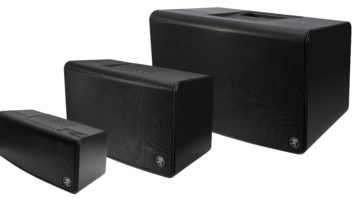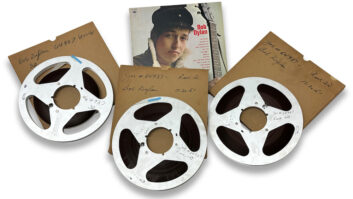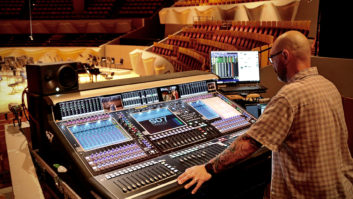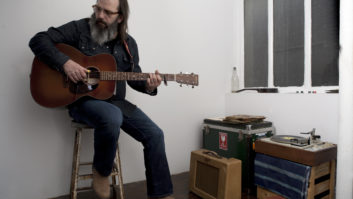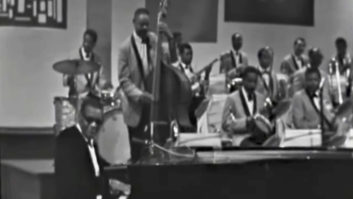You may have heard about a recent article called “America’s 25 Dying Industries,” breathlessly reporting that businesses like video stores, tuxedo shops and “sound recording studios” all have one foot in the grave. Originally published by 24/7 Wall St., the story was syndicated and reprinted by a slew of outlets—most prominently USA Today—and soon raced like wildfire through social media as audio pros anxiously shared the story with each other, worried that studios would go the way of Blockbuster Video.
Let’s be clear about this: Recording studios are not dying off, and we have the stats to prove it.
In fact, there are more studios in the U.S. today than ever before, barring two years just before the Great Recession. More over, there are far more audio professionals making a living in them than the 24/7 Wall St. story suggests.
So how did this discrepancy happen? Having to write the obituaries for 25 industries meant 24/7 Wall St. didn’t have much room for each profession. As a result, the topic of “sound recording studios” got a few statistics, followed by two paragraphs riddled with errors.
24/7 Wall St.’s statistics place studios’ current total employment at 4,657 people nationwide, stating that they make an average annual wage of $52,679. After observing in the first paragraph that “Musical production practices have evolved with technology technology [SIC] since the invention of sound recording in the 19th century,” the second paragraph states:
Sound City Studios, a recording studio in Los Angeles notable for its history with major musical acts such as Tom Petty, Johnny Cash, and Nirvana, closed its commercial operations in 2011. In total, the number of recording studios in the United States fell from 1,700 establishments in 2007 to 1,438 in 2016 — a 15.4% drop. Employment in the industry fell by 42.9% over the same period, one of the largest declines of any sector.
First off, 24/7 Wall St. is wrong about Sound City Studios—the facility went back to commercial operation almost a year ago, welcoming all comers with its mix of vintage and modern recording gear. In fact, we wrote an in-depth profile of Sound City in August, 2017. It’s a good story; you should read it. So should 24/7 Wall St.
Next, let’s look at those stats. 24/7 Wall St. says its data came from the Bureau of Labor Statistics (BLS). We’re sure the article’s authors didn’t pull those numbers out of thin air, but at the same time, hours spent foraging through databases on the BLS website left us empty-handed when we tried to find any of those exact figures, be they wages or number of studios. Neither direct source links nor methodology as to how the statistics were arrived at are offered in the 24/7 Wall St. story, so we can’t verify that they were reported accurately.
No doubt, the numbers are out there somewhere, but if we can’t see them in context, we can’t see what additional information was available. Examining additional data would allow us to get a more nuanced picture of studios’ downfall—or conversely, it might reveal that certain numbers were selectively chosen to support a pre-existing narrative. There’s no way to know.
Without the BLS statistics to pore through, we had to settle for the next best thing: digging through other, similar government statistics covering the same time period, because they’d generally line up with the BLS stats, right?
You may see where this is going….
If we turn to another respected source of government statistics, we discover a far rosier picture for recording studios (and feel free to follow the links below so you can verify them yourself).
Looking at data released in April, 2017, the U.S. Census Bureau reports there were 1,700 U.S. recording studios in 2015—the equal of that perilous high-point that 24/7 Wall St. says the industry dropped from. What’s more, that 1,700 is the third-highest number of recording facilities ever in the Census Bureau’s statistics—the only higher years were 2007 (1,729) and 2008 (1,793), just before the Great Recession kicked in.
That means the number of U.S. recording studios has been growing since 2009, and there are more studios today than there were in 2006 or any year before that. While we’ve watched a lot of high-profile studios in major metropolitan areas shutter over the last 15 years, runaway real-estate markets have always played a major part in those sad decisions, especially in Manhattan and parts of Nashville. Big live rooms are not always realistic to have in those areas today (though many are still around, like Manhattan’s Conclave Studios, seen at the top of this story). With popular music tastes changing towards less live instrumentation, those live rooms aren’t always necessary either. The thing to keep in mind, however, is that according to the Census Bureau statistics, for every big-name studio that’s gone under, usually another has opened somewhere else, much like when NYC studio owner David Amlen saw his Times Square-based MSR Recording fall victim to the real-estate market, paving the way for a move across the Hudson River to create the Sound On Sound Recording complex in Montclair, NJ. So, again, recording studios are not dying out.
Let’s get back to the stats: The Census Bureau’s 2015 figures also show that studios employed 5,037 people with an average wage of $54,608. Both figures beat those proffered by 24/7 Wall St. and the BLS, but to be fair, neither government agency’s figures accurately reflect the recording industry, because self-employed individuals—freelancers—are not included in their estimates. Accordingly, there could be hundreds, possibly thousands of additional recording pros making a living from studios in the United States, and there’s no guessing how that would affect the average wage statistic.
Fine, we’ve debunked 24/7 Wall St.’s stats, but moving beyond the inaccuracies, what really makes the article so frustrating is that these kinds of stories and their big, broad-stroke headlines—like the one USA Today used, “America’s 25 dying industries include sound studios, textiles, newspapers”—are damaging.
The story undermines an entire industry’s validity and intimates that people working in it must be willfully turning a blind eye towards oncoming disaster. What exactly are recording studios ignoring? Studios are the production lines of the music industry—an industry not in 24/7 Wall St.’s article. According to the RIAA, the music biz raked in $4 billion in the first six months of 2017 alone, up more than 17 percent from the previous year. Even if you put aside the “he said/she said” of the various government statistics, the RIAA’s figures show that recording studios as an industry aren’t going anywhere, if only because they are ancillary to a much larger machine.
Studios are also part of the larger pro-audio ecosystem, and the important word there is “pro,” as in “audio created by professionals.” Pros are people with real-world experience and education, regardless of whether they’re working in a famous big-room studio or a small, private facility, and they are not going to be replaced by weekend warriors with Garageband and $29 computer speakers from a Best Buy clearance bin. Sure, there are bound to be outliers—there always are and should be for that matter, because that’s how artistic professions grow—but that doesn’t change the fact that the greatest feature a studio can offer is its professional staff: people with hard-won knowledge and talent who can make a client sound better than he or she has any right to. Presenting that career as analogous to a part-time job like ‘video store clerk’ is disingenuous at best and extremely disappointing.
Nonetheless, the fact remains: Recording studios are alive and well—changing with the times, growing in number and providing both current and future audio pros with creative, satisfying work for many years to come.
